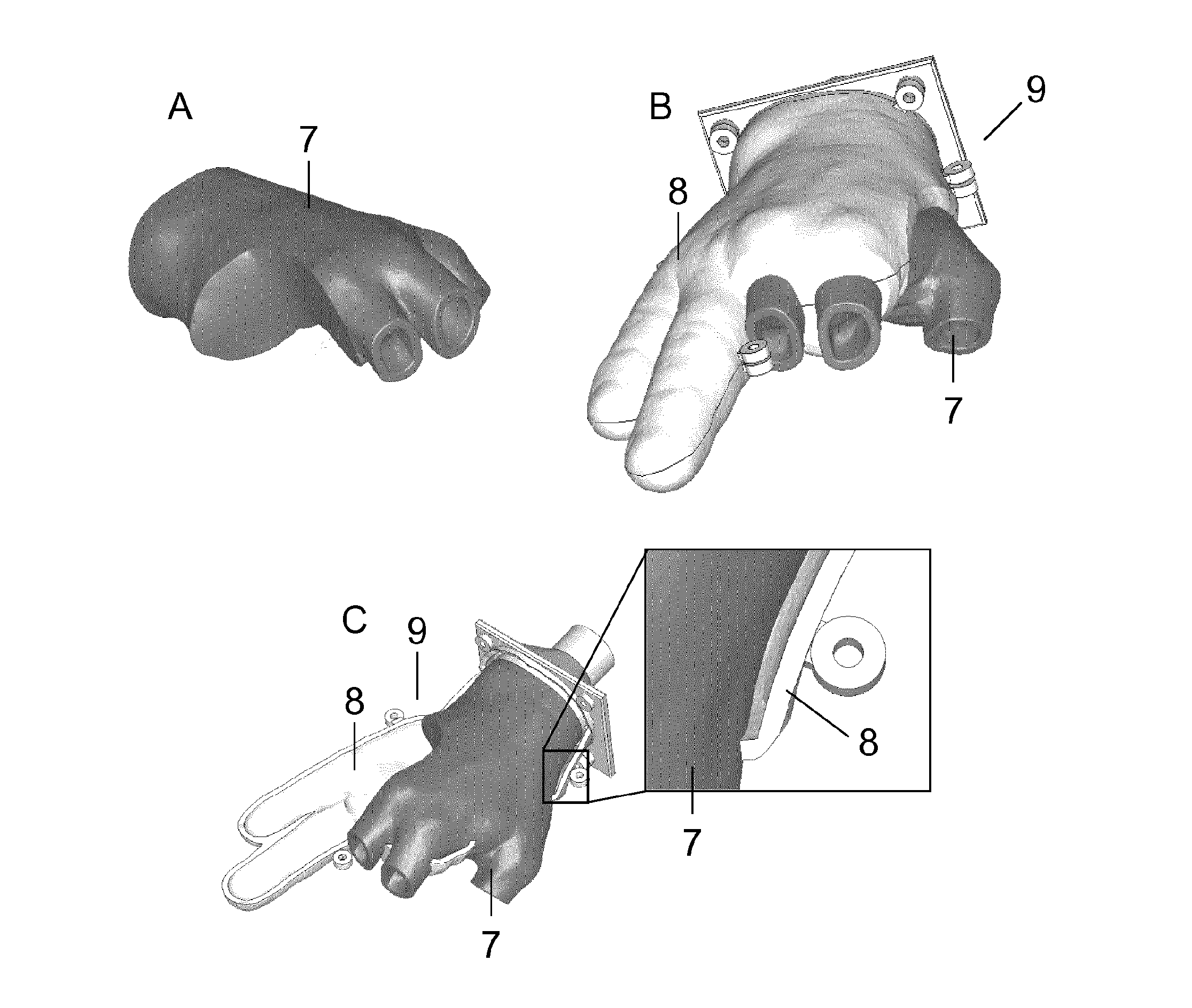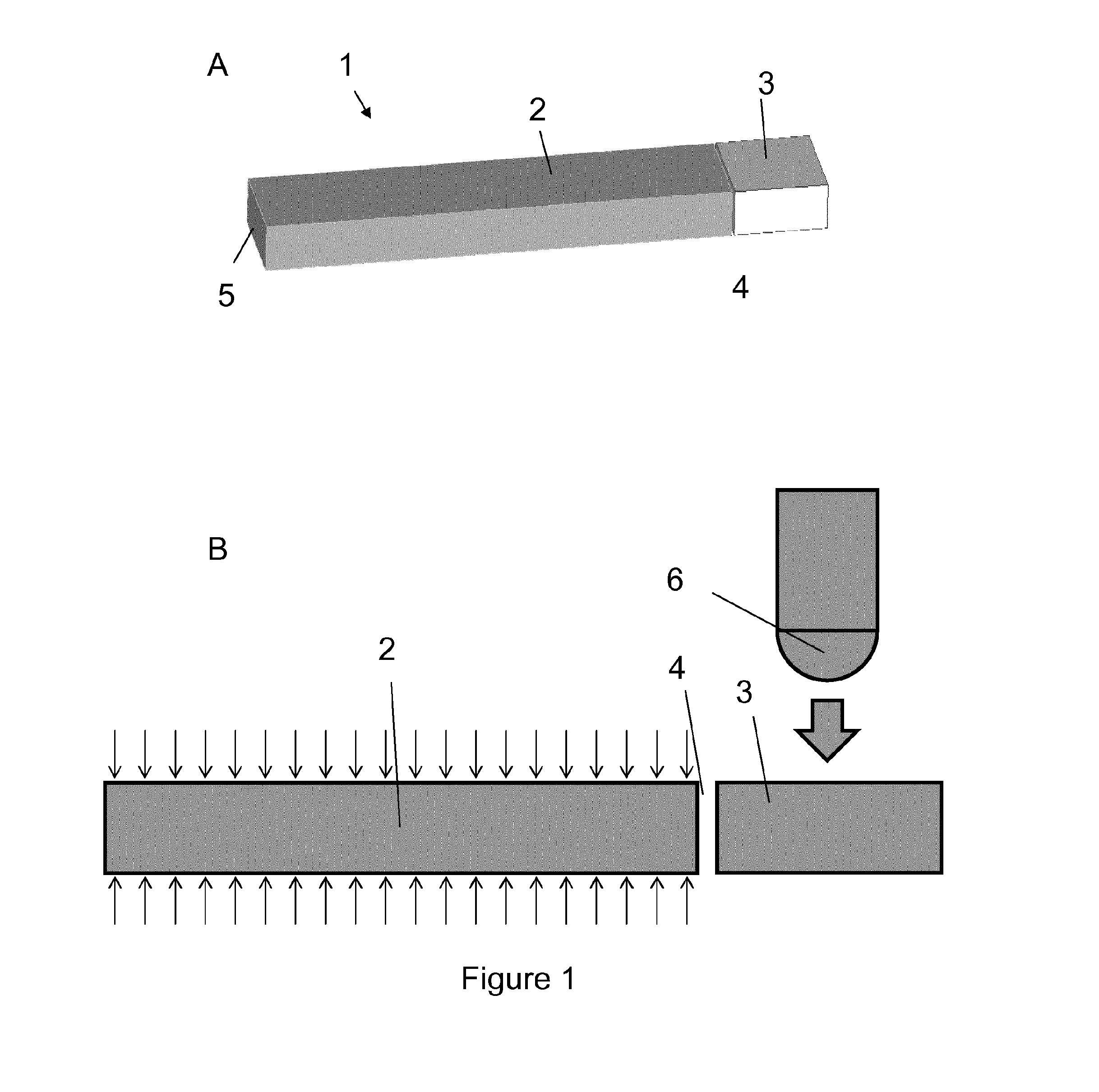Additive manufacturing of tiled objects
a technology of additive manufacturing and tiled objects, applied in the field of objects, can solve the problems of difficult or uneconomical removal of molds from castings, entail certain limitations of molds and/or shapes of objects to be casts, and achieve the effect of improving design flexibility and facilitating the removal of objects
- Summary
- Abstract
- Description
- Claims
- Application Information
AI Technical Summary
Benefits of technology
Problems solved by technology
Method used
Image
Examples
example 1
Seams with Non-Uniform Thickness
[0092]FIG. 2A shows an example of two tile pieces (2, 3) separated by a planar seam (4) with uniform thickness. Various examples of tile pieces (2, 3) separated by seam (4) with non-uniform thickness are shown in FIG. 2B-G. The seam with non-uniform thickness may be obtained if one or both neighboring surfaces of two adjacent tile pieces or tiles has a non-planar shape, for example as shown in FIG. 2 B, C, D, E and F. However, a seam with non-uniform thickness may also be obtained when both neighboring surfaces have a planar shape, as shown in FIG. 2 G. The non-uniform thickness of the seams may provide tailored strong and weak areas within the seams.
example 2
[0093]FIGS. 3 and 4 show an exemplary embodiment of a mold insert (7) which is placed within an outer mold (8). The composed mold (9) provides a mold which is suitable for casting a prosthetic or a part thereof. While the outer mold (8) can be removed easily after casting, the mold insert (7) is more difficult to remove. Accordingly the mold insert (7) is made by additive manufacturing using the methods as provided herein. More particularly, the mold insert is made of one and the same material and is provided with a tiled structure whereby the seam strength is lower than the tile strength. This allows breaking of the mold insert by applying manual pressure thereon and removal of the tiles from the interior of the prosthetic part.
PUM
| Property | Measurement | Unit |
|---|---|---|
| width | aaaaa | aaaaa |
| width | aaaaa | aaaaa |
| thick | aaaaa | aaaaa |
Abstract
Description
Claims
Application Information
 Login to View More
Login to View More - R&D
- Intellectual Property
- Life Sciences
- Materials
- Tech Scout
- Unparalleled Data Quality
- Higher Quality Content
- 60% Fewer Hallucinations
Browse by: Latest US Patents, China's latest patents, Technical Efficacy Thesaurus, Application Domain, Technology Topic, Popular Technical Reports.
© 2025 PatSnap. All rights reserved.Legal|Privacy policy|Modern Slavery Act Transparency Statement|Sitemap|About US| Contact US: help@patsnap.com



